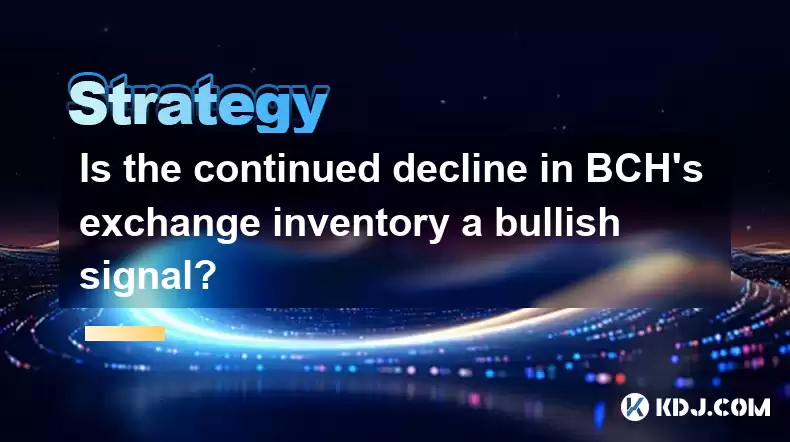-
 Bitcoin
Bitcoin $114000
0.76% -
 Ethereum
Ethereum $3488
0.53% -
 XRP
XRP $2.908
2.27% -
 Tether USDt
Tether USDt $1.000
0.05% -
 BNB
BNB $750.3
0.39% -
 Solana
Solana $161.9
0.14% -
 USDC
USDC $1.000
0.03% -
 TRON
TRON $0.3258
1.22% -
 Dogecoin
Dogecoin $0.1991
1.38% -
 Cardano
Cardano $0.7260
3.39% -
 Hyperliquid
Hyperliquid $38.20
2.33% -
 Stellar
Stellar $0.3987
7.33% -
 Sui
Sui $3.414
1.17% -
 Chainlink
Chainlink $16.28
2.52% -
 Bitcoin Cash
Bitcoin Cash $542.2
2.07% -
 Hedera
Hedera $0.2489
7.51% -
 Ethena USDe
Ethena USDe $1.001
0.05% -
 Avalanche
Avalanche $21.40
0.70% -
 Toncoin
Toncoin $3.635
0.75% -
 Litecoin
Litecoin $109.8
2.04% -
 UNUS SED LEO
UNUS SED LEO $8.955
-0.02% -
 Shiba Inu
Shiba Inu $0.00001221
2.44% -
 Uniswap
Uniswap $9.152
2.20% -
 Polkadot
Polkadot $3.588
2.09% -
 Monero
Monero $298.1
1.27% -
 Dai
Dai $1.000
0.01% -
 Bitget Token
Bitget Token $4.326
1.28% -
 Pepe
Pepe $0.00001045
1.96% -
 Cronos
Cronos $0.1330
4.27% -
 Aave
Aave $257.9
2.12%
Is the continued decline in BCH's exchange inventory a bullish signal?
Declining BCH exchange inventory may signal bullish sentiment as holders move assets to private wallets, potentially reducing selling pressure and boosting prices.
Apr 25, 2025 at 10:08 am

The ongoing discussion around Bitcoin Cash (BCH) and its exchange inventory has sparked interest among cryptocurrency enthusiasts and investors. The question at hand is whether the continued decline in BCH's exchange inventory can be considered a bullish signal. To address this, it's essential to delve into the dynamics of exchange inventories, understand what a declining inventory might signify, and examine the broader context of BCH's market performance.
Understanding Exchange Inventory
Exchange inventory refers to the total amount of a specific cryptocurrency held on various cryptocurrency exchanges. This metric is crucial as it can provide insights into market sentiment and potential price movements. When the exchange inventory of a cryptocurrency like BCH decreases, it often indicates that holders are moving their assets off exchanges and into private wallets. This action can be interpreted in several ways, but one common interpretation is that investors are opting for long-term storage, possibly signaling a bullish sentiment.
Reasons Behind Declining Exchange Inventory
A decline in BCH's exchange inventory can occur for several reasons. One primary reason is the increased confidence among BCH holders. When investors believe in the long-term value of a cryptocurrency, they are more likely to move their assets to cold storage or private wallets, reducing the supply available on exchanges. This action can lead to a decrease in selling pressure, which might be a precursor to a price increase.
Another reason could be the anticipation of a price surge. If market participants believe that BCH's price is about to rise, they might withdraw their coins from exchanges to avoid selling during a potential bull run. By doing so, they can hold onto their assets and potentially sell at a higher price in the future.
Analyzing the Bullish Signal
While a declining exchange inventory can be seen as a bullish signal, it's important to consider other factors that might influence BCH's price. Market sentiment, overall cryptocurrency market trends, and specific news or developments related to BCH can all play significant roles in determining whether a declining inventory will lead to a price increase.
For instance, if the broader cryptocurrency market is experiencing a bearish trend, a decline in BCH's exchange inventory might not necessarily lead to a price surge. Conversely, if the market is bullish and BCH is gaining positive attention, the declining inventory could indeed contribute to a bullish scenario.
Historical Data and Trends
To better understand the potential impact of a declining exchange inventory on BCH's price, it's useful to look at historical data. Analyzing past instances where BCH's exchange inventory declined can provide insights into how the market reacted. If previous declines in inventory were followed by price increases, it might strengthen the case for a bullish signal.
However, it's crucial to approach historical data with caution. Each market situation is unique, and past performance does not guarantee future results. Therefore, while historical trends can be informative, they should not be the sole basis for investment decisions.
Other Factors to Consider
Beyond exchange inventory, several other factors can influence BCH's price. Trading volume, on-chain metrics, and the overall health of the BCH network are all important considerations. For instance, if trading volume is increasing alongside a declining exchange inventory, it might reinforce the bullish signal. On the other hand, if trading volume remains low, the impact of the declining inventory might be less pronounced.
Additionally, on-chain metrics such as transaction volume and active addresses can provide further context. If these metrics are also trending positively, it could support the notion that a declining exchange inventory is indeed a bullish signal.
Case Studies and Examples
Examining specific case studies can offer a more concrete understanding of how a declining exchange inventory has impacted BCH's price in the past. For example, during a particular period when BCH's exchange inventory saw a significant decline, the price of BCH might have increased by a certain percentage. Analyzing such cases can help investors gauge the potential impact of current trends.
It's also beneficial to look at other cryptocurrencies that have experienced similar trends. If other cryptocurrencies with declining exchange inventories have seen price increases, it might suggest that BCH could follow a similar pattern.
Frequently Asked Questions
Q: How can I track BCH's exchange inventory?
A: To track BCH's exchange inventory, you can use various cryptocurrency analytics platforms such as CoinMarketCap, CoinGecko, or specialized blockchain analytics tools like Glassnode or CryptoQuant. These platforms provide real-time data on the amount of BCH held on exchanges.
Q: What other indicators should I look at alongside exchange inventory to assess BCH's market health?
A: In addition to exchange inventory, you should consider indicators such as trading volume, on-chain metrics (like transaction volume and active addresses), market sentiment, and any recent news or developments related to BCH. Combining these indicators can provide a more comprehensive view of BCH's market health.
Q: Can a declining exchange inventory be a bearish signal in some cases?
A: While a declining exchange inventory is often seen as a bullish signal, it can sometimes be bearish. For instance, if the decline is due to investors losing faith in the cryptocurrency and moving their assets to other cryptocurrencies or fiat, it could indicate a bearish outlook. Context and other market indicators are crucial in determining the true impact.
Q: How frequently should I monitor BCH's exchange inventory?
A: The frequency of monitoring BCH's exchange inventory depends on your investment strategy. For long-term investors, checking the inventory weekly or monthly might be sufficient. For those engaged in more active trading, daily or even hourly checks might be necessary to stay on top of market trends.
Disclaimer:info@kdj.com
The information provided is not trading advice. kdj.com does not assume any responsibility for any investments made based on the information provided in this article. Cryptocurrencies are highly volatile and it is highly recommended that you invest with caution after thorough research!
If you believe that the content used on this website infringes your copyright, please contact us immediately (info@kdj.com) and we will delete it promptly.
- XRP: Crypto Analyst's Smartest Buy in 2025?
- 2025-08-04 00:30:13
- SEC, Crypto Regulation, and Digital Assets: A New Era?
- 2025-08-04 00:30:13
- Navigating the Meme Coin Mania: Cold Wallets, SHIB, and DOGE in 2025
- 2025-08-03 22:30:16
- Bitcoin's Price Fall and Scrutiny: What's a New Yorker to Think?
- 2025-08-03 22:30:16
- Shiba Inu's Resistance and Recovery Push: What's Next for SHIB?
- 2025-08-03 22:50:16
- Bitcoin, Hashcash, and Crypto Innovation: A Look at the Foundation and Future
- 2025-08-03 23:12:53
Related knowledge

How to avoid common crypto investment mistakes?
Jul 13,2025 at 01:35am
Understanding the Risks of Crypto InvestmentInvesting in cryptocurrency can be highly rewarding, but it also comes with significant risks. One of the ...

What is a long-short crypto strategy?
Jul 15,2025 at 10:56am
Understanding the Basics of a Long-Short Crypto StrategyA long-short crypto strategy is an investment approach where traders simultaneously take long ...

What is a long-short crypto strategy?
Jul 11,2025 at 01:28pm
Understanding the Basics of Long-Short Crypto StrategyA long-short crypto strategy is an investment approach where traders take both long and short po...

How to use the RSI indicator for crypto?
Jul 12,2025 at 03:56pm
Understanding the RSI Indicator in Cryptocurrency TradingThe Relative Strength Index (RSI) is a momentum oscillator used to measure the speed and chan...

Is copy trading a good strategy for crypto beginners?
Jul 12,2025 at 08:28am
Understanding Copy Trading in the Cryptocurrency MarketCopy trading is a strategy where novice traders replicate the trades of experienced investors a...

How to build a crypto portfolio with $1000?
Jul 13,2025 at 08:14pm
Understanding the Basics of Cryptocurrency InvestmentBuilding a crypto portfolio with $1000 starts with understanding the fundamentals of cryptocurren...

How to avoid common crypto investment mistakes?
Jul 13,2025 at 01:35am
Understanding the Risks of Crypto InvestmentInvesting in cryptocurrency can be highly rewarding, but it also comes with significant risks. One of the ...

What is a long-short crypto strategy?
Jul 15,2025 at 10:56am
Understanding the Basics of a Long-Short Crypto StrategyA long-short crypto strategy is an investment approach where traders simultaneously take long ...

What is a long-short crypto strategy?
Jul 11,2025 at 01:28pm
Understanding the Basics of Long-Short Crypto StrategyA long-short crypto strategy is an investment approach where traders take both long and short po...

How to use the RSI indicator for crypto?
Jul 12,2025 at 03:56pm
Understanding the RSI Indicator in Cryptocurrency TradingThe Relative Strength Index (RSI) is a momentum oscillator used to measure the speed and chan...

Is copy trading a good strategy for crypto beginners?
Jul 12,2025 at 08:28am
Understanding Copy Trading in the Cryptocurrency MarketCopy trading is a strategy where novice traders replicate the trades of experienced investors a...

How to build a crypto portfolio with $1000?
Jul 13,2025 at 08:14pm
Understanding the Basics of Cryptocurrency InvestmentBuilding a crypto portfolio with $1000 starts with understanding the fundamentals of cryptocurren...
See all articles

























































































